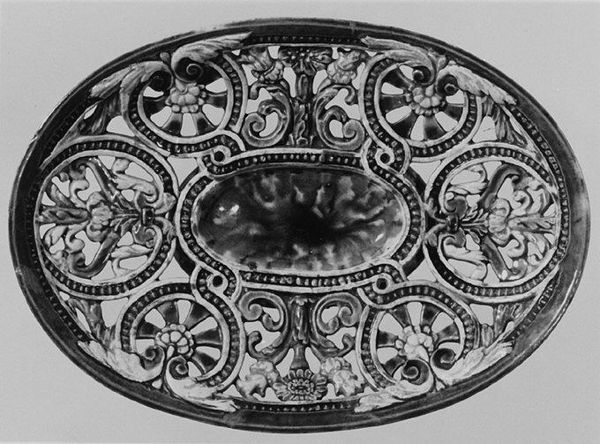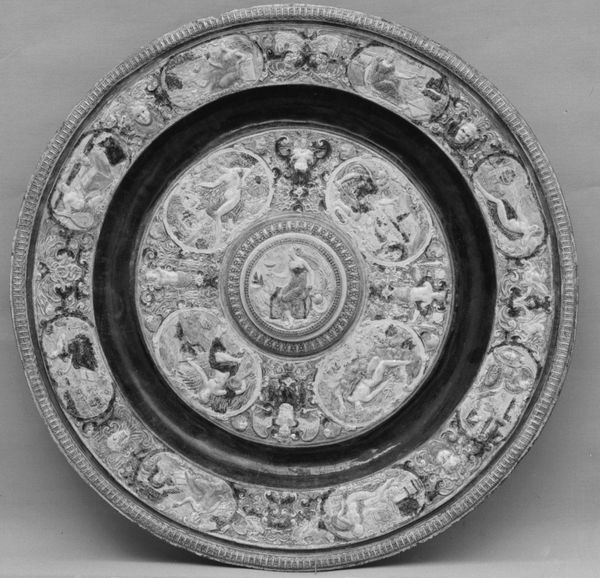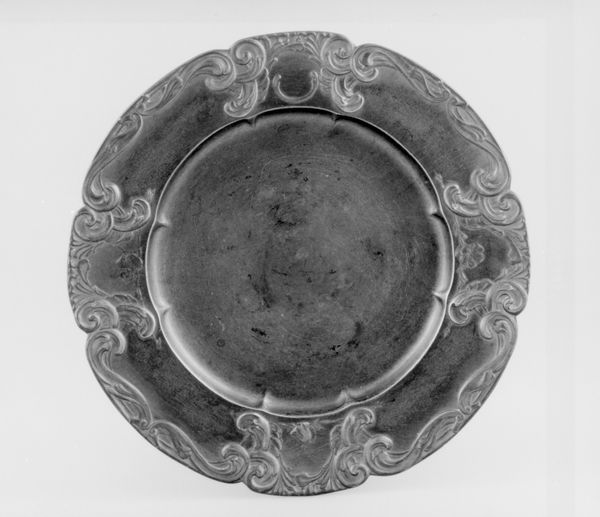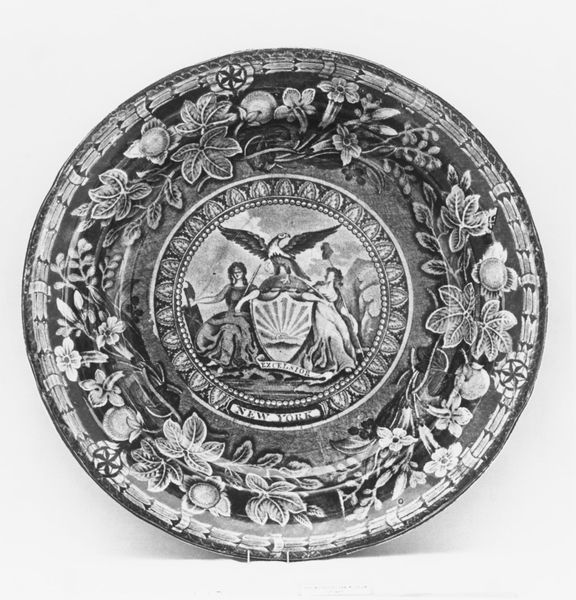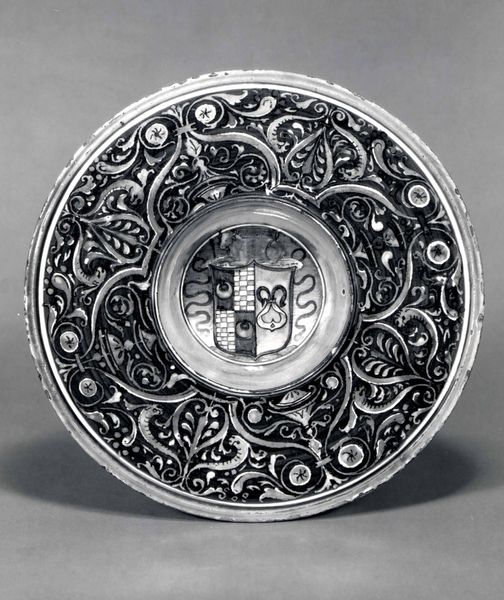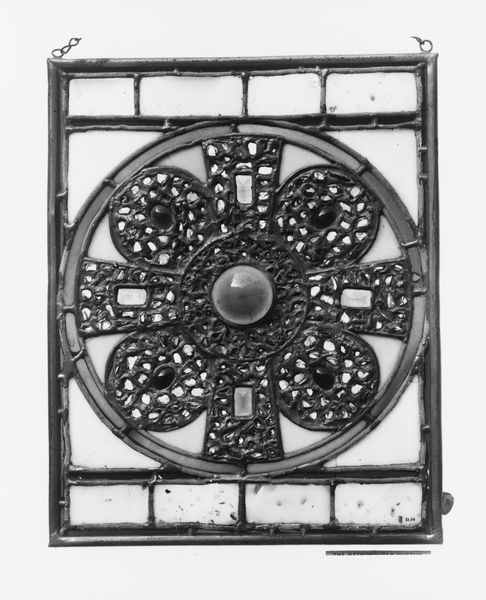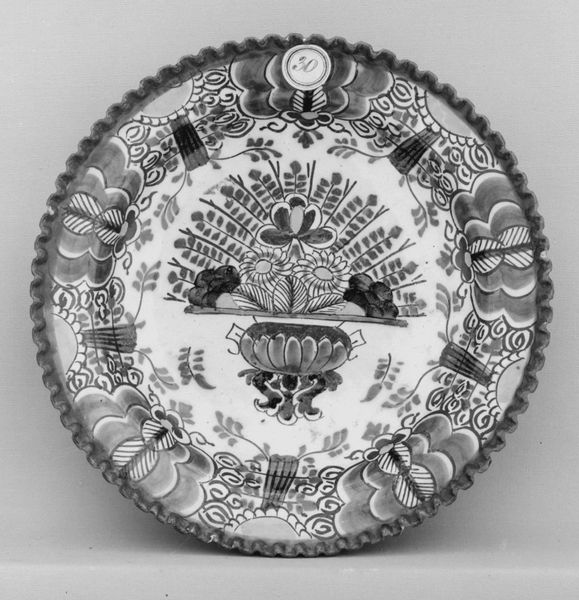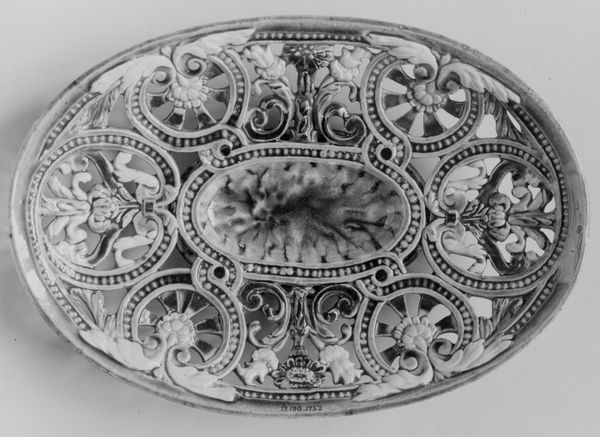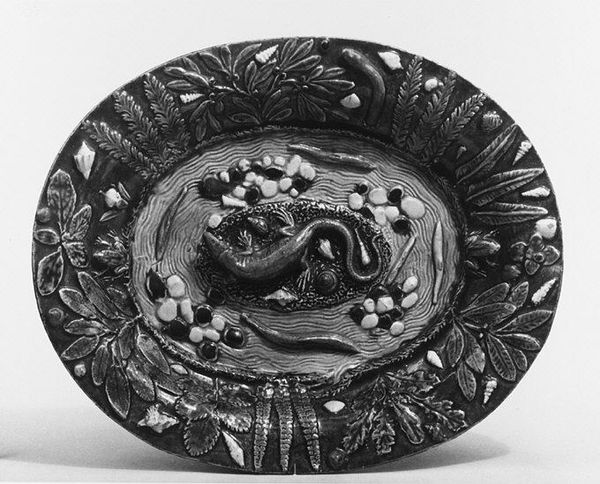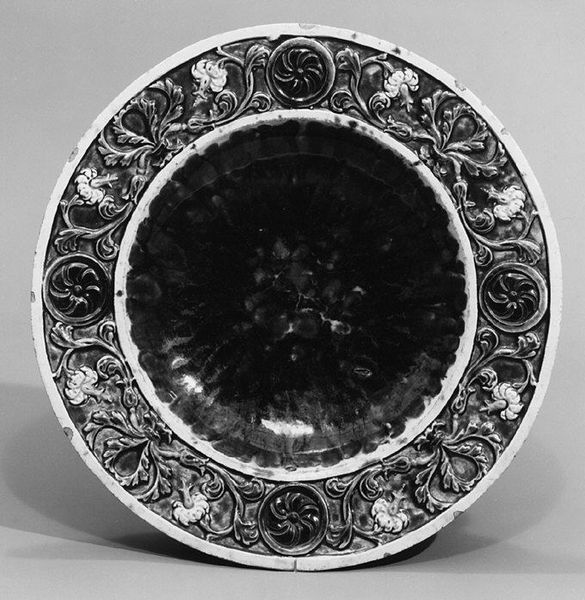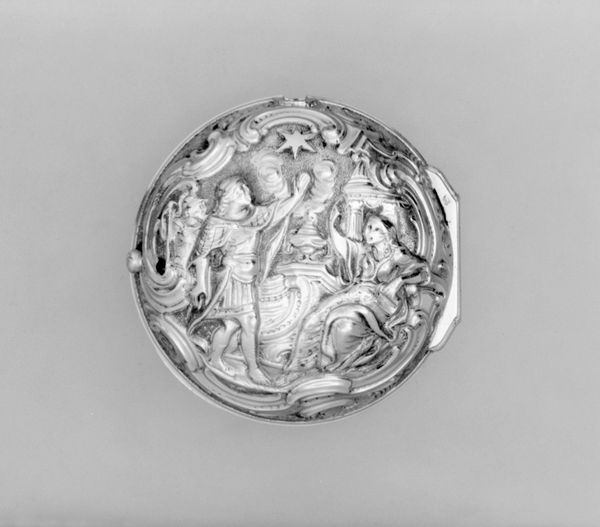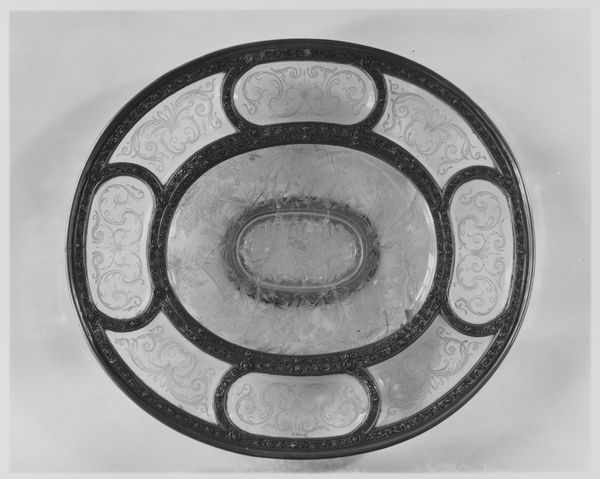
ceramic, sculpture
#
portrait
#
ceramic
#
11_renaissance
#
sculpture
#
decorative-art
#
italian-renaissance
#
monochrome
Dimensions: Overall: 2 × 7 3/4 in. (5.1 × 19.7 cm)
Copyright: Public Domain
Curator: We're looking at a ceramic dish, an intriguing object created by Bernard Palissy in the 17th century. You can find this work here at the Metropolitan Museum of Art. Editor: It’s striking how ornate this monochrome dish appears! It looks like more of a sculptural object than something functional. Curator: The structure is indeed noteworthy. The circular form is divided into four quadrants, each containing curvilinear vegetal and grotesque motifs, set around a central, dark boss. Note how each segment mirrors the others, contributing to overall symmetry. Editor: Those figures bordering the piece... are they representations of putti? I find it curious how Renaissance and Baroque art, across Europe, continually recycled such antique imagery to portray spiritual or symbolic concepts of childhood, innocence, and play. Curator: An interesting observation. These classical allusions certainly infuse the dish with an air of humanist intellect and refined taste, fitting for a work crafted during that period. Technically, the piece exhibits the mastery Palissy possessed when modeling three-dimensional form within a circular frame. Editor: Right—while the floral elements and monstrous heads hint at established decorative programs, the circular void carved out creates the symbolic tension: lightness, movement and escape, yet grounded by the fixed mass. Curator: Indeed. Consider also how the monochrome palette affects our reading of form; the shadows and highlights become essential, giving tangible shape and presence within a composition reliant on balanced organization. Editor: And that centered darker element... perhaps speaking to an esoteric interest beyond pure display. We should recall alchemy, Neoplatonism, with its darker interpretations. Perhaps the symbolism lies just out of our reach... Curator: Well, reflecting on the totality, both the design logic and possible encoded meaning, reveal the artist’s adept skill—demonstrating an innovative engagement within established design, and perhaps a symbolic one. Editor: It's a powerful intersection of decorative bravura and intellectual inquiry that holds continued fascination.
Comments
No comments
Be the first to comment and join the conversation on the ultimate creative platform.
